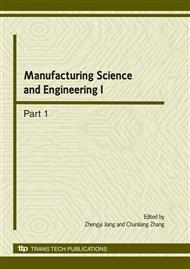p.1161
p.1166
p.1170
p.1177
p.1181
p.1186
p.1194
p.1198
p.1203
Post-CMP Cleaning of Atom-Scale Planarization Surface of Computer Hard Disk Substrate
Abstract:
At present, the surface of computer hard disk substrate has reached atom-scale planarization after chemical mechanical polishing (CMP). Post-CMP cleaning is one of the key factors influencing the CMP performances. During cleaning, cleaning solution and cleaning methods play a key role in cleaning quality and effectiveness. In the present paper, alkylpolyoxyethylene alcohol carboxylic ester (FAC) surfactant was synthesized and its cleaning performances on atom-scale planarization surface of computer hard disk substrate were investigated. Microscope analysis indicated that the prepared detergent containing FAC surfactant exhibited improved cleaning performances compared with the commercial detergent. Further, inductively coupled plasma (ICP) atomic emission spectrometer, auger electron spectrogram (AES) and atomic force microscopy (AFM) analyses after static corrosion test showed that the prepared cleaning solution had lower corrosion to hard disk substrate.
Info:
Periodical:
Pages:
1181-1185
Citation:
Online since:
March 2010
Authors:
Price:
Сopyright:
© 2010 Trans Tech Publications Ltd. All Rights Reserved
Share:
Citation:


